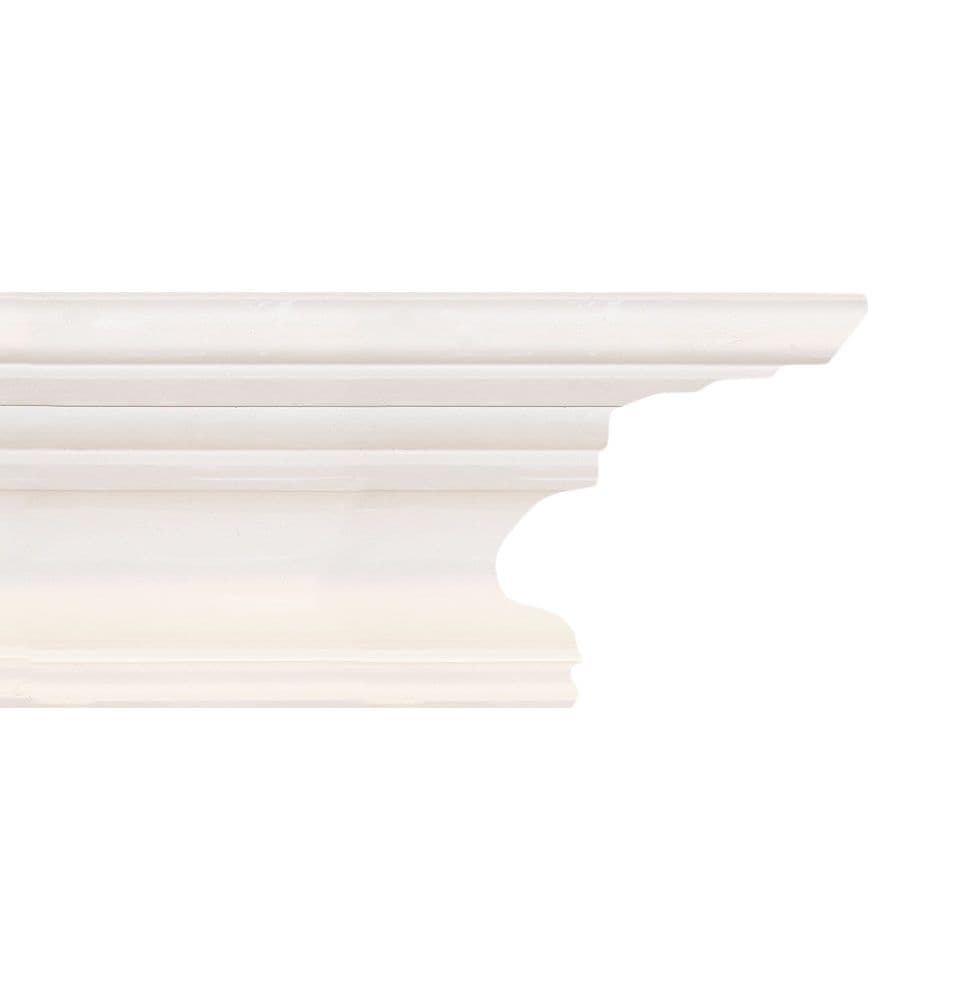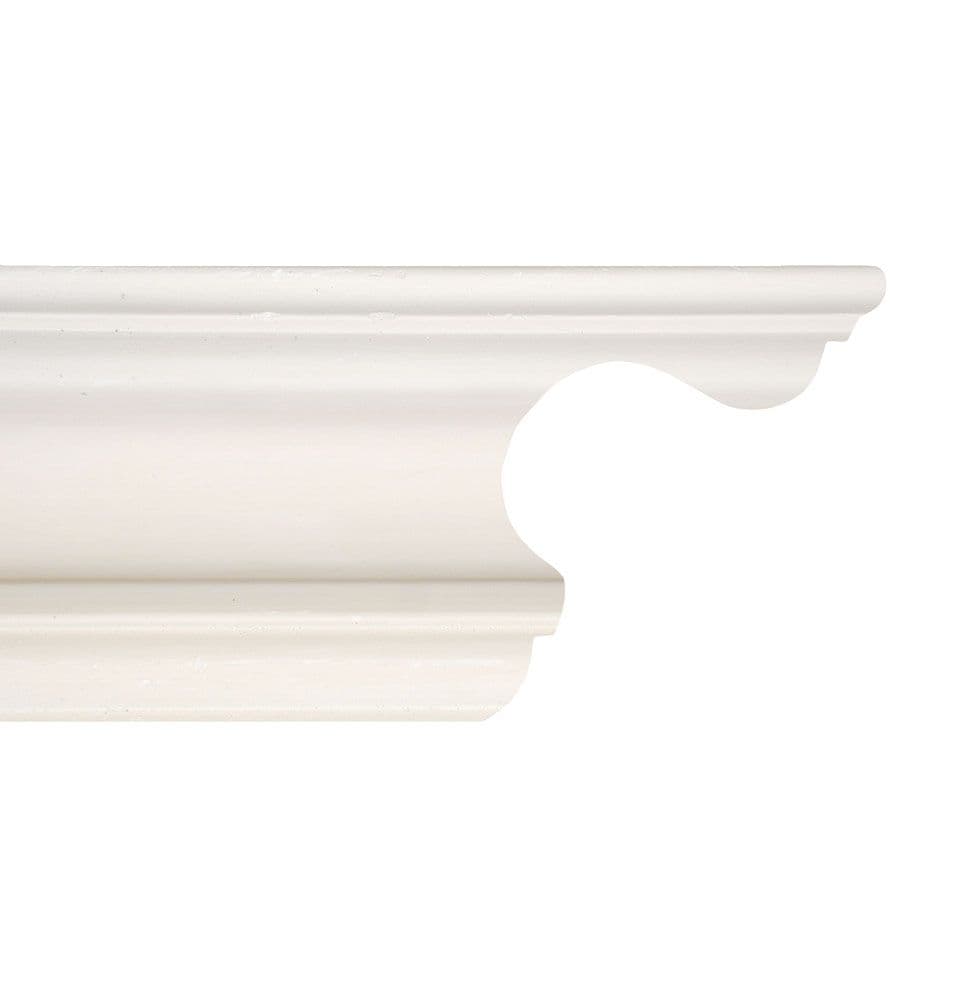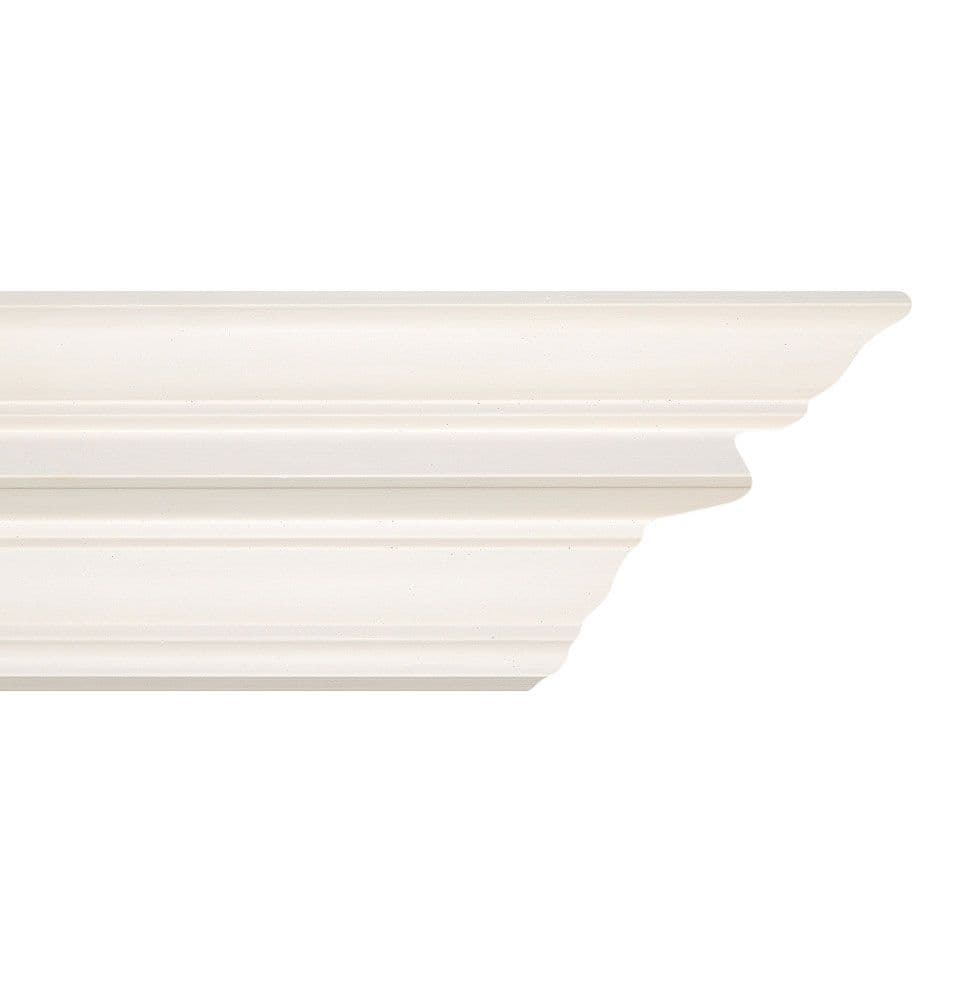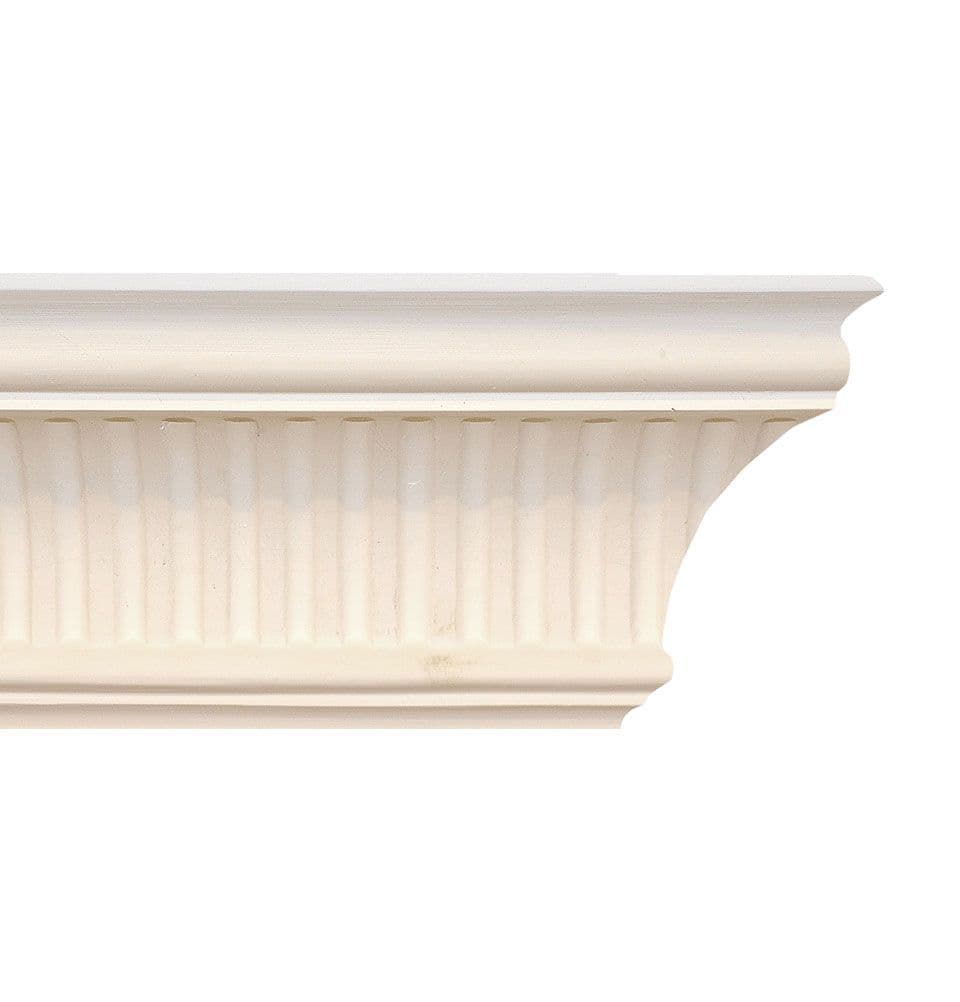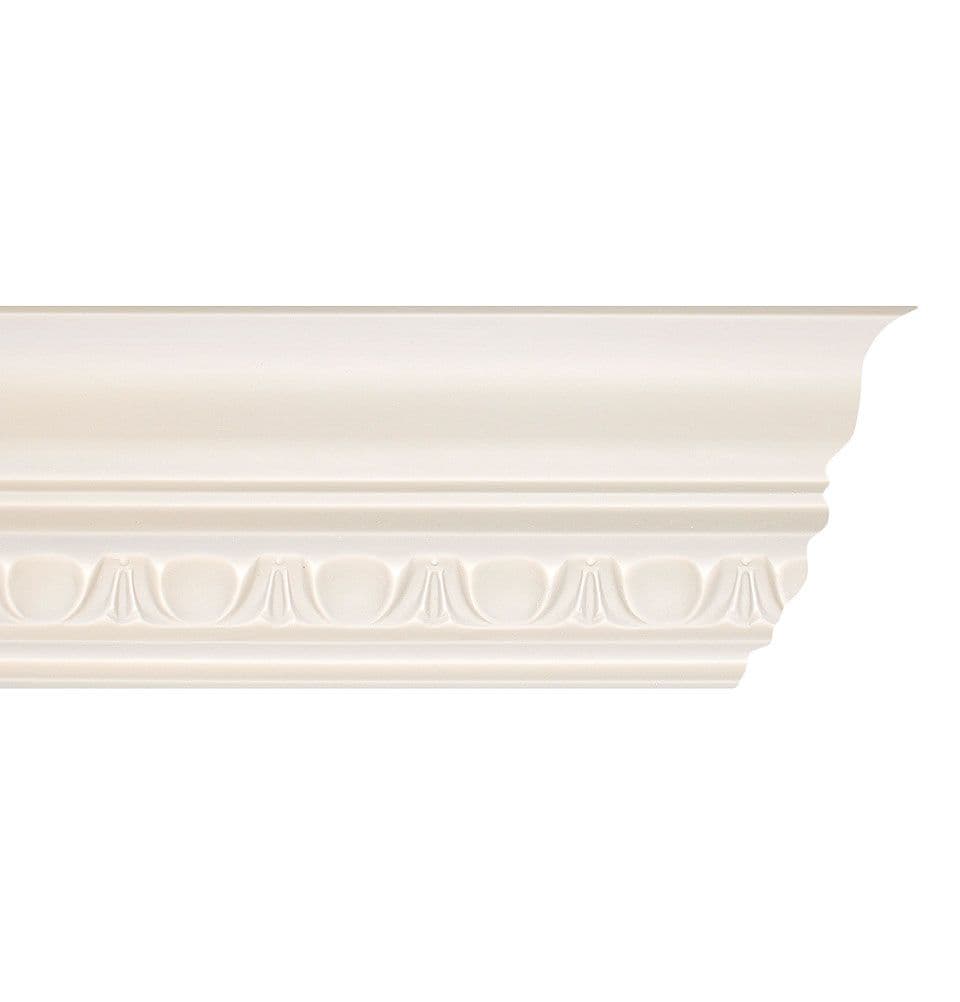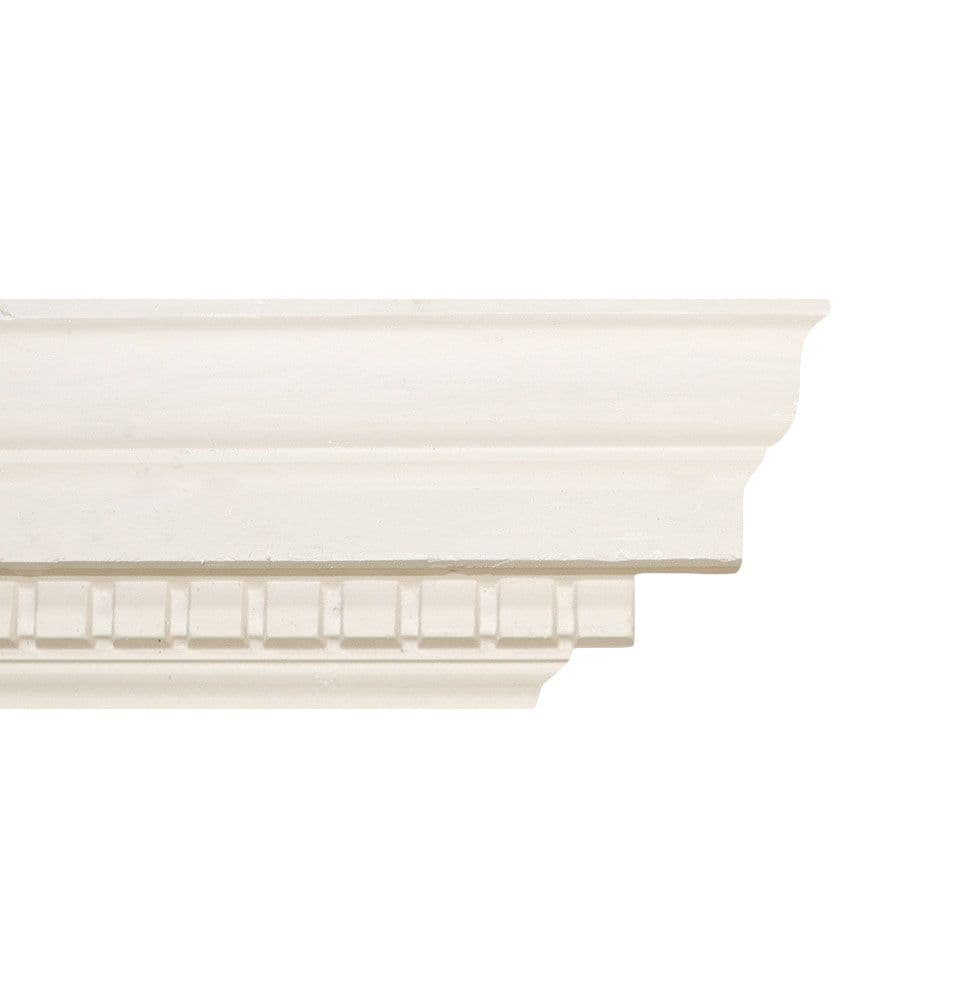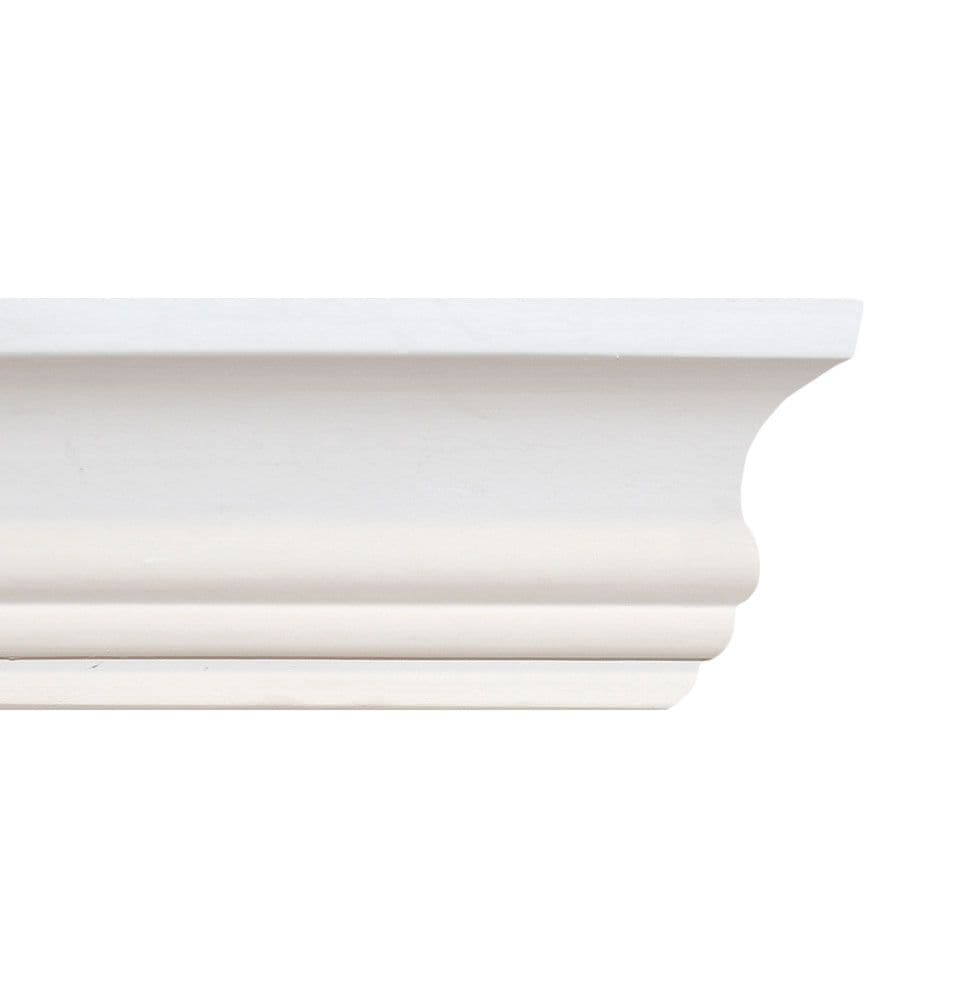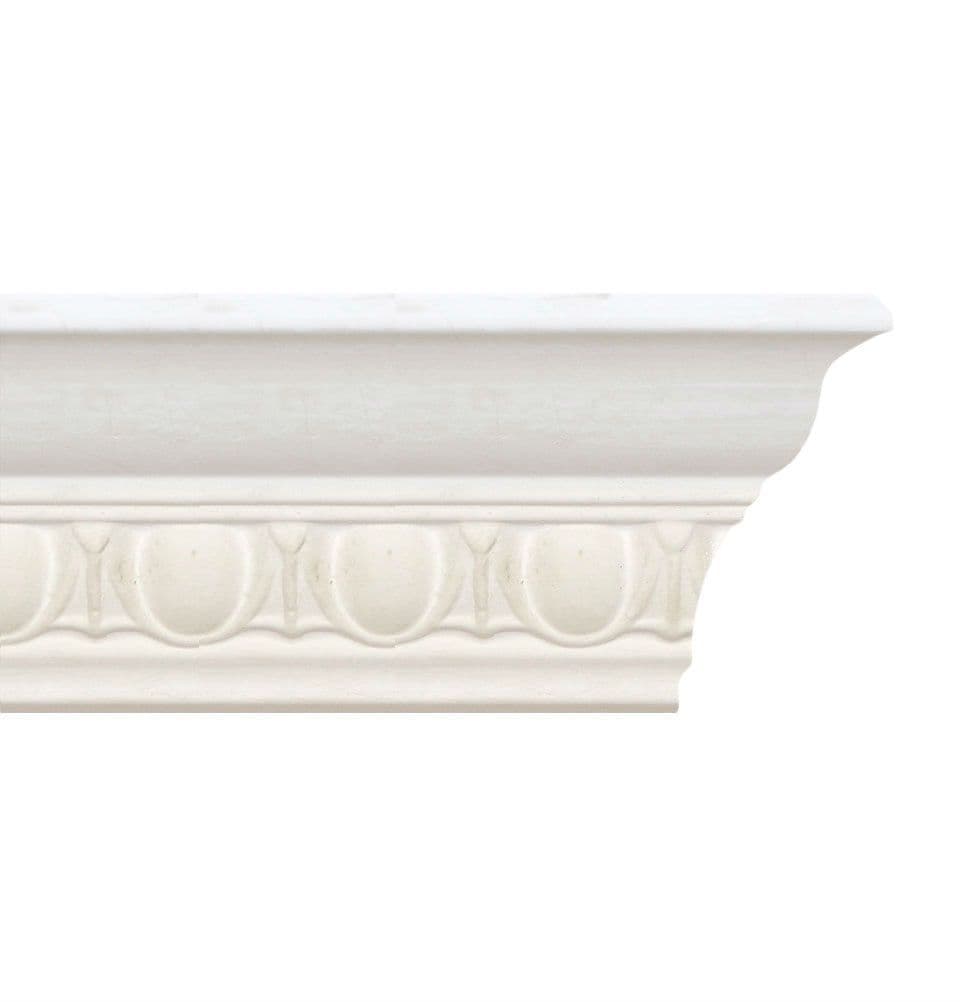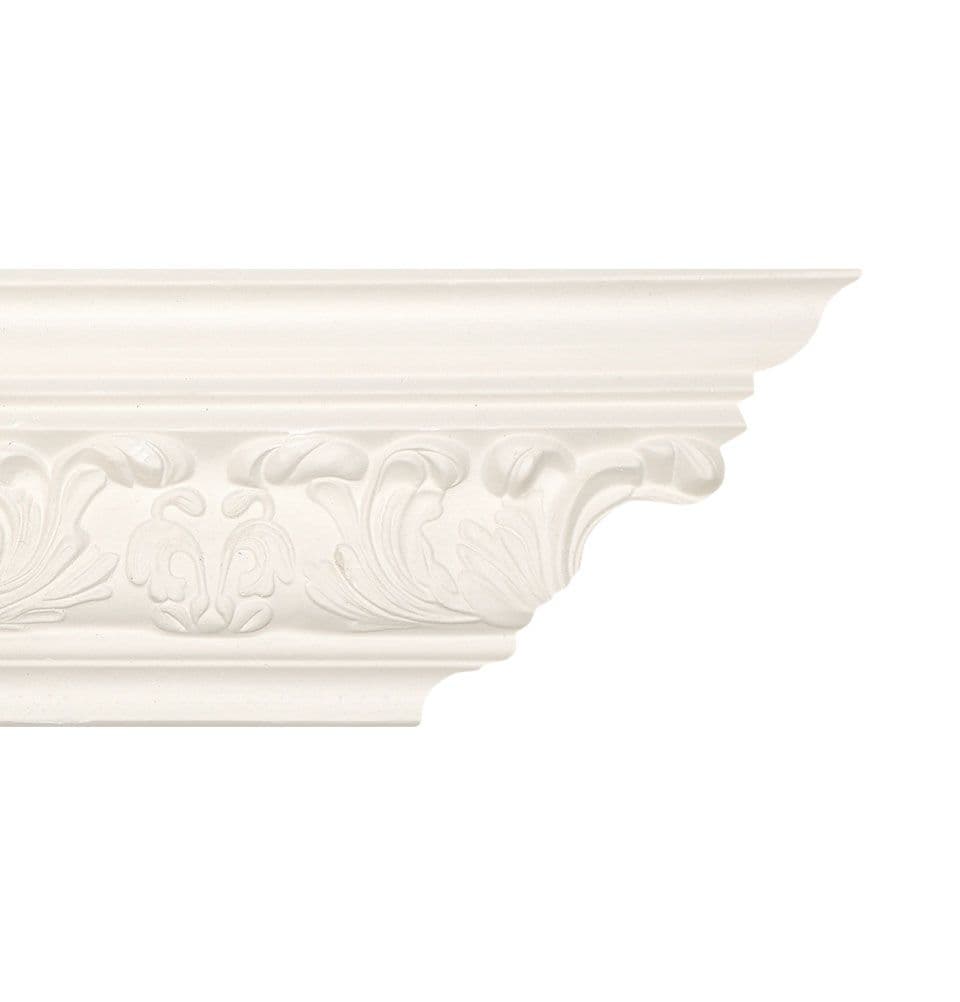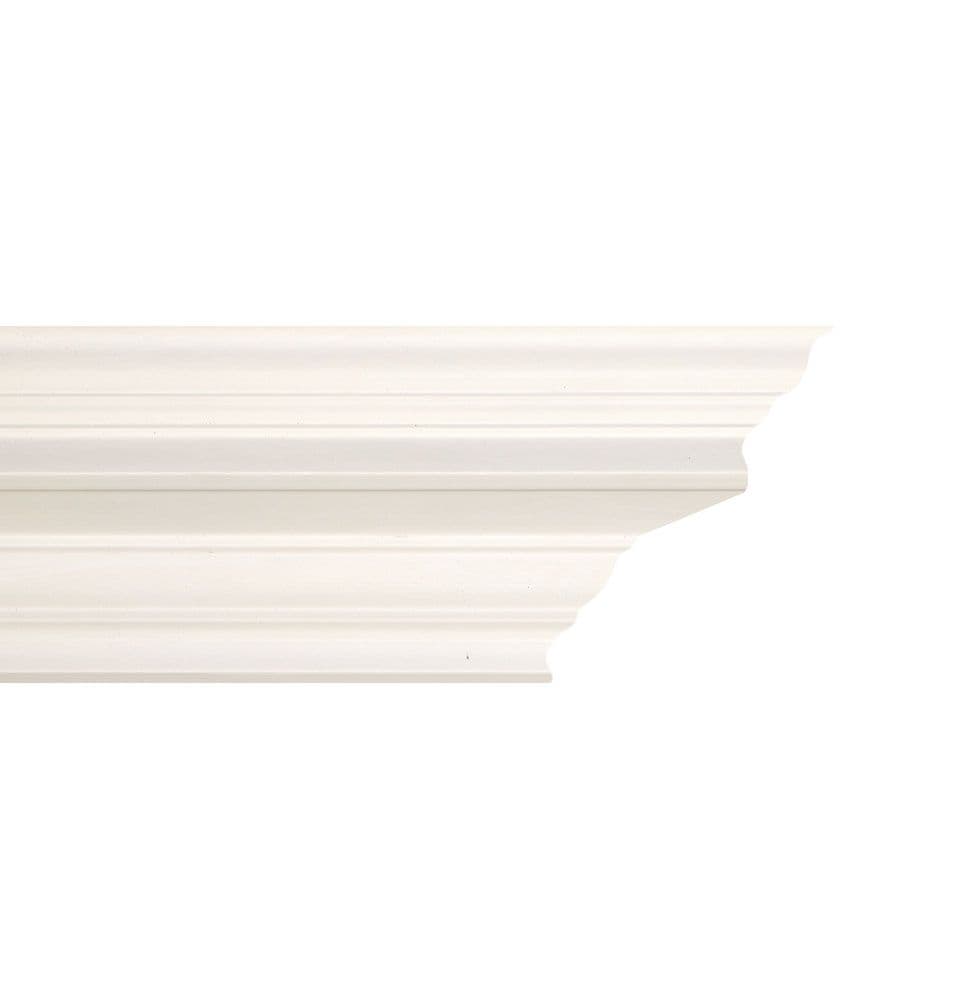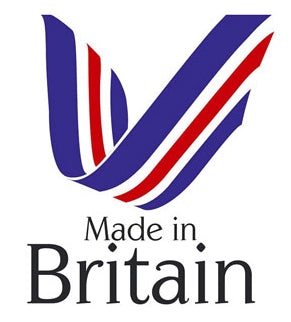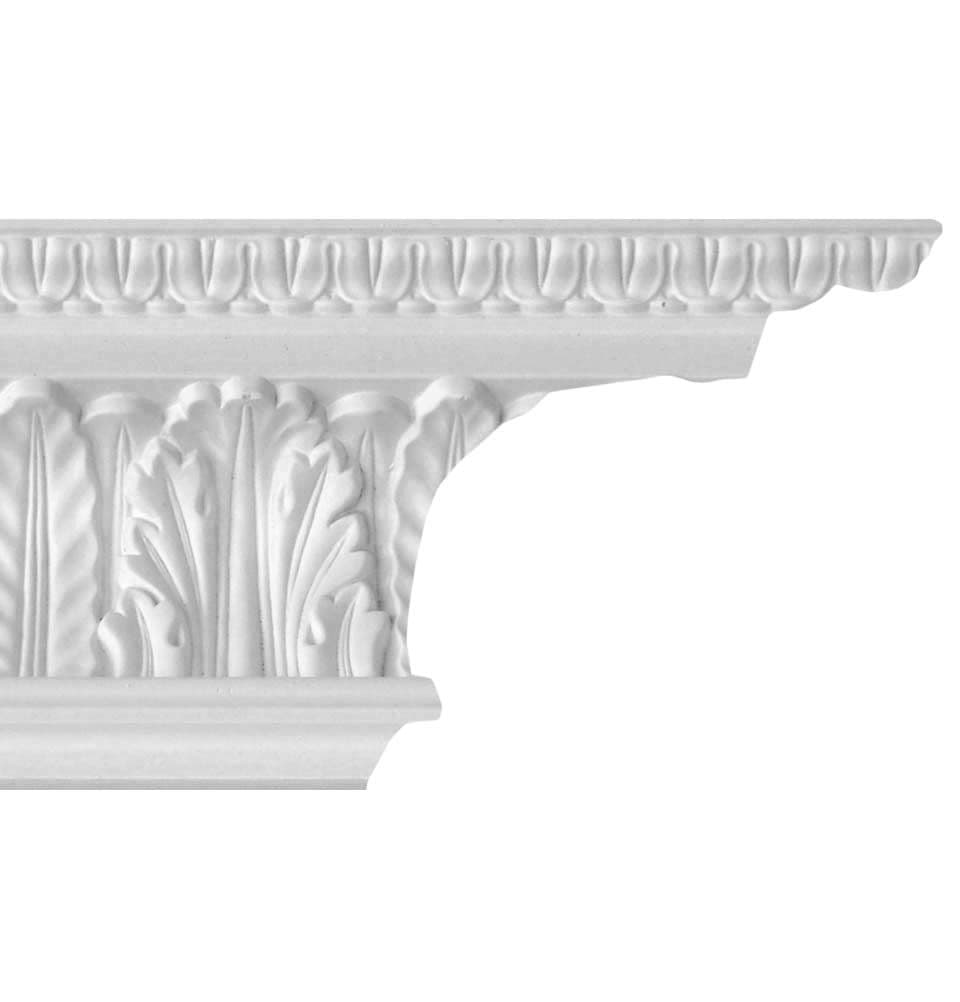Collection:
British Made Coving
Discover the quality and craftsmanship of British made plaster coving, handcrafted in the UK using traditional techniques and premium-grade plaster. Our locally produced coving offers exceptional detail, durability, and authenticity — perfect for enhancing both period and modern interiors. By choosing British made, you're supporting skilled artisans and ensuring your home benefits from timeless design rooted in architectural heritage.
British made coving is strengthened with hessian and wooden laths using traditional techniques. It tends to be slightly heavier than GRG strengthened cornices and comes in 3m lengths.
Filter
55 products
Yorkshire Edwardian Plaster Coving 115mm x 70mm
Product Code: YPC-G040-140
Regular price
£18.59 GBP / metre
Sale price
£18.59 GBP / metre
Regular price
Unit price
/per
York Plaster Coving 80mm x 70mm
Product Code: YPC-G022-110
Regular price
£18.59 GBP / metre
Sale price
£18.59 GBP / metre
Regular price
Unit price
/per
Water Leaf Plaster Coving 102mm x 127mm
Product Code: YPC-H023-165
Regular price
£15.55 GBP / metre
Sale price
£15.55 GBP / metre
Regular price
Unit price
/per
Victorian Roped Plaster Coving 102mm x 140mm
Product Code: YPC-H022-175
Regular price
£15.55 GBP / metre
Sale price
£15.55 GBP / metre
Regular price
Unit price
/per
Traditional Georgian Plaster Coving 115mm x 100mm
Product Code: YPC-G029-155
Regular price
£18.59 GBP / metre
Sale price
£18.59 GBP / metre
Regular price
Unit price
/per
Swan Neck Plaster Coving 178mm x 89mm
Product Code: YPC-G031-200
Regular price
£16.55 GBP / metre
Sale price
£16.55 GBP / metre
Regular price
Unit price
/per
Straight Run Plaster Coving 102mm x 124mm
Product Code: YPC-G038-160
Regular price
£16.55 GBP / metre
Sale price
£16.55 GBP / metre
Regular price
Unit price
/per
Stepped Plaster Coving 80mm x 130mm
Product Code: YPC-G033-165
Regular price
£15.11 GBP / metre
Sale price
£15.11 GBP / metre
Regular price
Unit price
/per
Small Victorian Plaster Coving 76mm x 108mm
Product Code: YPC-H017-135
Regular price
£14.40 GBP / metre
Sale price
£14.40 GBP / metre
Regular price
Unit price
/per
Small Triangle Plaster Coving 85mm x 90mm
Product Code: YPC-H020-150
Regular price
£16.56 GBP / metre
Sale price
£16.56 GBP / metre
Regular price
Unit price
/per
Small Swan Neck Plaster Coving 99mm x 95mm
Product Code: YPC-G018-135
Regular price
£15.11 GBP / metre
Sale price
£15.11 GBP / metre
Regular price
Unit price
/per
Small Royal Victorian Plaster Coving 95mm x 105mm
Product Code: YPC-G008-150
Regular price
£18.59 GBP / metre
Sale price
£18.59 GBP / metre
Regular price
Unit price
/per
Small Old Acanthus Leaf Plaster Coving 108mm x 92mm
Product Code: YPC-H019-140
Regular price
£15.55 GBP / metre
Sale price
£15.55 GBP / metre
Regular price
Unit price
/per
Small Honeysuckle Plaster Coving 70mm x 95mm
Product Code: YPC-H018-115
Regular price
£13.68 GBP / metre
Sale price
£13.68 GBP / metre
Regular price
Unit price
/per
Small Historic Plain Plaster Coving 90mm x 100mm
Product Code: YPC-G015-140
Regular price
£18.59 GBP / metre
Sale price
£18.59 GBP / metre
Regular price
Unit price
/per
Small Georgian - Regency Coving 115mm x 83mm
Product Code: YPC-G032-135
Regular price
£15.11 GBP / metre
Sale price
£15.11 GBP / metre
Regular price
Unit price
/per
Small Fluted Plaster Coving 67mm x 83mm
Product Code: YPC-H016-110
Regular price
£13.68 GBP / metre
Sale price
£13.68 GBP / metre
Regular price
Unit price
/per
Small Egg and Dart Plaster Coving 90mm x 100mm
Product Code: YPC-G002-135
Regular price
£13.67 GBP / metre
Sale price
£13.67 GBP / metre
Regular price
Unit price
/per
Small Drop Leaf Plaster Coving 108mm x 108mm
Product Code: YPC-H015-160
Regular price
£15.12 GBP / metre
Sale price
£15.12 GBP / metre
Regular price
Unit price
/per
Small Dentil Plaster Coving 80mm x 105mm
Product Code: YPC-G006-120
Regular price
£15.11 GBP / metre
Sale price
£15.11 GBP / metre
Regular price
Unit price
/per
Small Classic Plaster Coving 120mm x 100mm
Product Code: YPC-G024-156
Regular price
£18.59 GBP / metre
Sale price
£18.59 GBP / metre
Regular price
Unit price
/per
Small Barley Twist Plaster Coving 83mm x 89mm
Product Code: YPC-H014-120
Regular price
£13.68 GBP / metre
Sale price
£13.68 GBP / metre
Regular price
Unit price
/per
Rococo Plaster Coving 90mm x 90mm
Product Code: YPC-G009-125
Regular price
£15.11 GBP / metre
Sale price
£15.11 GBP / metre
Regular price
Unit price
/per
Park Run Plaster Coving 214mm x 184mm
Product Code: YPC-H010-282
Regular price
£29.99 GBP / metre
Sale price
£29.99 GBP / metre
Regular price
Unit price
/per
North Cave Plaster Coving 121mm x 127mm
Product Code: YPC-G017-170
Regular price
£16.55 GBP / metre
Sale price
£16.55 GBP / metre
Regular price
Unit price
/per
New Small Georgian Plaster Coving 83mm x 102mm
Product Code: YPC-G013-150
Regular price
£15.11 GBP / metre
Sale price
£15.11 GBP / metre
Regular price
Unit price
/per
Mini Georgian Plaster Coving 65mm x 65mm
Product Code: YPC-G034-100
Regular price
£13.67 GBP / metre
Sale price
£13.67 GBP / metre
Regular price
Unit price
/per
Mini Egg and Dart Plaster Coving 60mm x 76mm
Product Code: YPC-H008-100
Regular price
£13.68 GBP / metre
Sale price
£13.68 GBP / metre
Regular price
Unit price
/per
Medium Royal Acanthus Plaster Coving 110mm x 110mm
Product Code: YPC-G004-150
Regular price
£16.55 GBP / metre
Sale price
£16.55 GBP / metre
Regular price
Unit price
/per
Medium Historic Plain Plaster Coving 100mm x 125mm
Product Code: YPC-G016-160
Regular price
£18.59 GBP / metre
Sale price
£18.59 GBP / metre
Regular price
Unit price
/per
Medium Georgian Plaster Coving 124mm x 118mm
Product Code: YPC-G012-160
Regular price
£16.55 GBP / metre
Sale price
£16.55 GBP / metre
Regular price
Unit price
/per
Medium Barley Twist Plaster Coving 95mm x 105mm
Product Code: YPC-H007-140
Regular price
£17.28 GBP / metre
Sale price
£17.28 GBP / metre
Regular price
Unit price
/per
LED Plaster Coving 130mm x 130mm
Product Code: YPC-GLED-180
Regular price
£21.59 GBP / metre
Sale price
£21.59 GBP / metre
Regular price
Unit price
/per
Large Victorian Plaster Coving 143mm x 165mm
Product Code: YPC-H006-218
Regular price
£16.63 GBP / metre
Sale price
£16.63 GBP / metre
Regular price
Unit price
/per
Large Swan Neck Plaster Coving 254mm x 165mm
Product Code: YPC-H005-302
Regular price
£29.99 GBP / metre
Sale price
£29.99 GBP / metre
Regular price
Unit price
/per
Large Swag and Bow Plaster Coving 98mm x 145mm
Product Code: YPC-H021-175
Regular price
£18.00 GBP / metre
Sale price
£18.00 GBP / metre
Regular price
Unit price
/per







